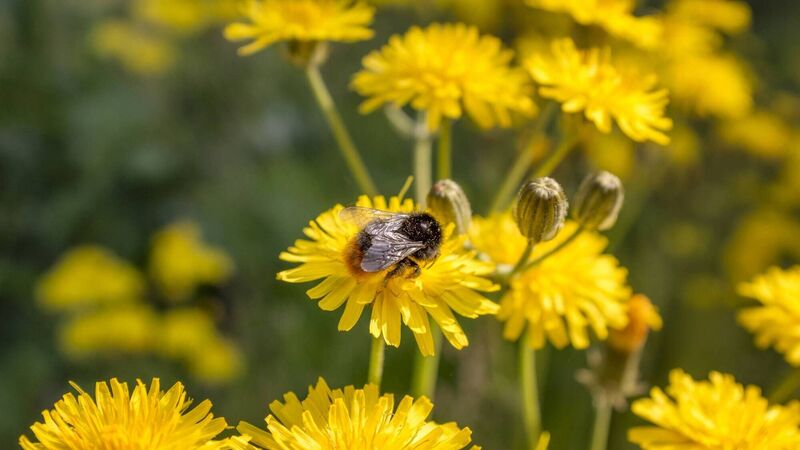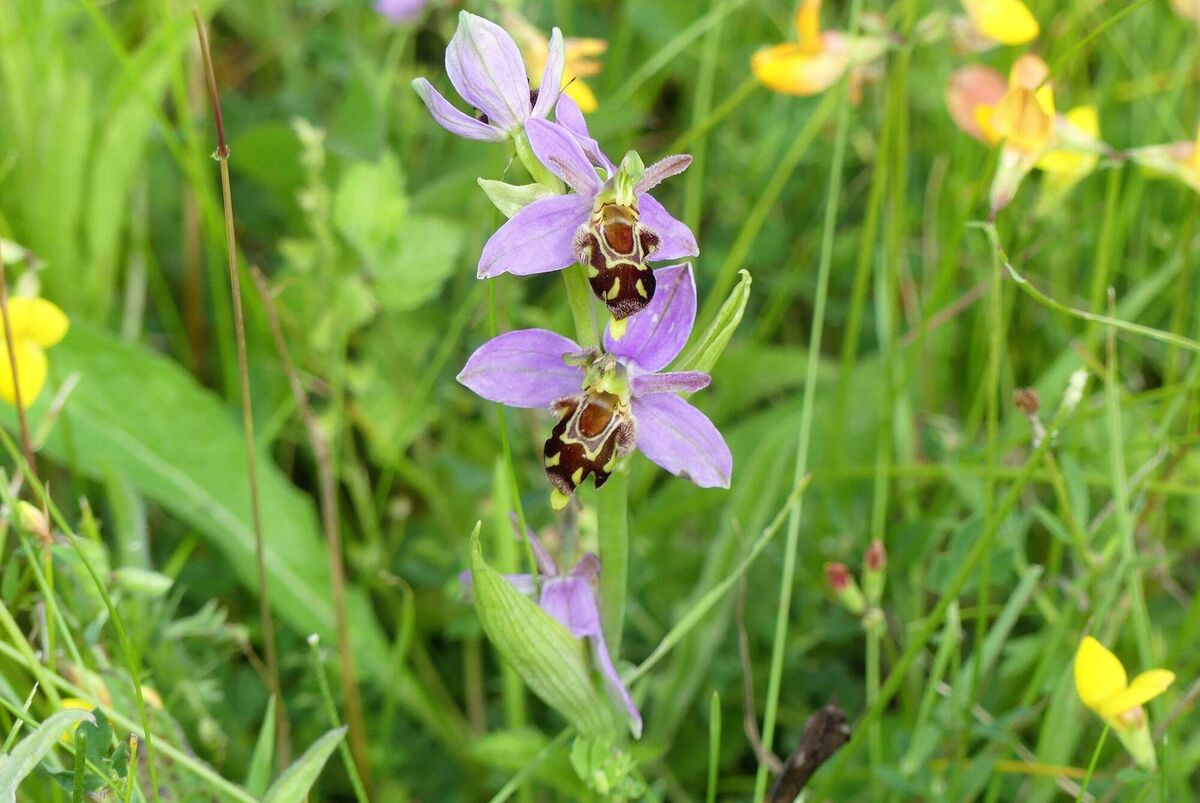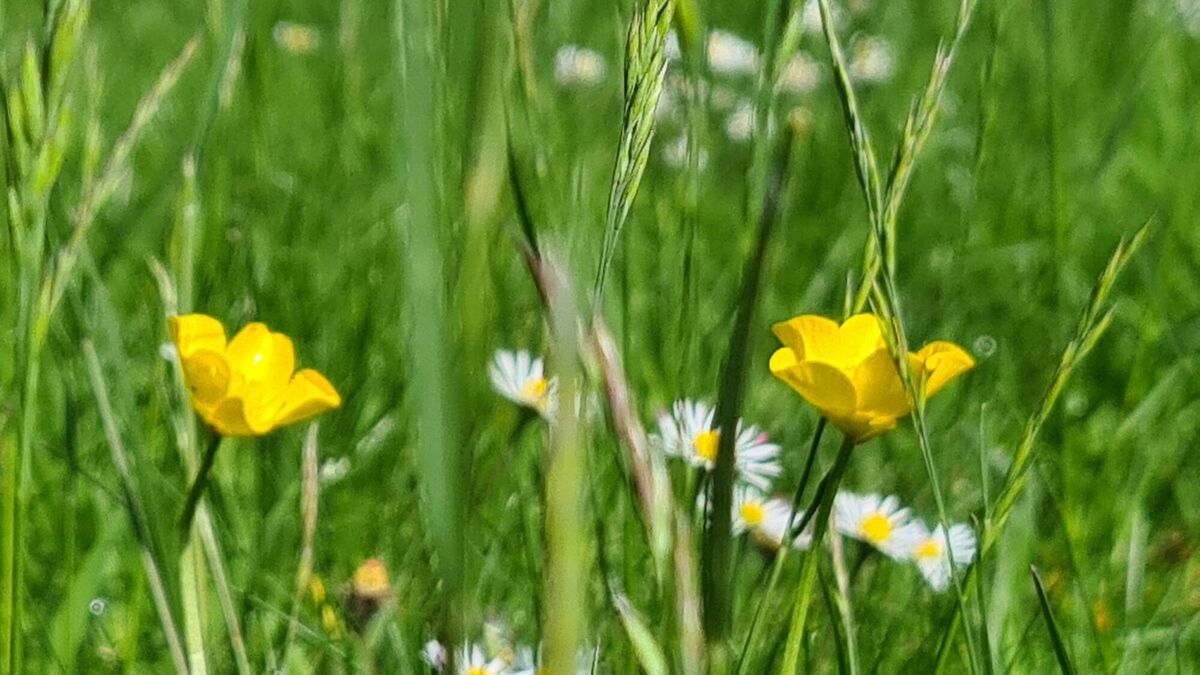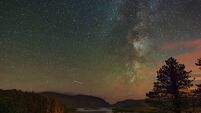Want to mow your lawn while it's sunny? Here’s why you should wait, or stop completely

Allow native wildflowers such as dandelions and clover to flourish and nourish our pollinators in what they describe as a short-flowering meadow. Seeds for these wildflowers can be gathered locally.
With the recent sunny spell, many of us have noticed the sound of lawnmowers in our localities as keen gardeners get a headstart on mowing their lawns in these dry conditions. However, if you’re tempted to get mowing too, there is an argument to be made for holding off and allowing your grass to grow for a while longer.
The All-Ireland Pollinator Plan suggests cutting parts of or all of your grass less frequently to allow native wildflowers to grow and provide food for bees and other pollinators. They recommend going against the norm and stepping away from a manicured lawn completely, despite how pretty we think it may look.
“To humans, a neatly manicured lawn looks tidy, but without being dramatic, to our wildlife it must look a bit like the apocalypse. It would be like us returning to a desolate earth with almost all our food crops wiped out,” says co-founder and project coordinator, Dr Úna Fitzpatrick.
Dr Fitzpatrick says if we allow grasses and hedgerows to grow freely, not only will we save time, effort and money, but we will be greatly helping our wildlife.
“Native plants in hedgerows and meadows are very rich in the pollen and nectar that our insects need to survive. Wild bees don’t make honey, so they have no way of storing food. They are never more than a few days away from starvation so it’s very important that there is a continual supply of flowers in the landscape to feed on.”
In 2020, due to reduced mowing practices during the beginning of the pandemic, the All-Ireland Pollinator Plan noticed an increase in some native wildflowers, including bee orchids.

The National Biodiversity Data Centre typically receives reports of bee orchid sightings from around 20 sites each year. In June 2020, 363 Bee Orchids appeared within unmown roadside verges in Midleton, Co Cork. 2020 was also the first year of the town’s reduced mowing regime as part of the Pollinator Plan.
Additionally in 2020, a rare green-winged orchid appeared on an unmown grassy verge in a Portlaoise housing estate nearly 120 years after it was previously found in the general area.
At the time, the organisation noted: “Perhaps not in such spectacular numbers, but this year, new bee orchid records are popping up all over Ireland as a result of reduced mowing due to Covid-19. Those little seeds have been waiting in the soil for decades to get a chance to pop up and show us their beauty.
Cutting back on your grass cutting is the most pocket-effective way to help bees and, crucially, they say there is no need to buy wildflower seeds in addition to this. Instead, allow native wildflowers such as dandelions and clover to flourish and nourish our pollinators in what they describe as a short-flowering meadow. Seeds for these wildflowers can be gathered locally.
The All-Ireland Pollinator Plan suggests a cease in mowing is more effective than planting seeds bought in packets for a number of reasons:
- You will achieve a higher biodiversity value by reducing your mowing.
- You will often be surprised at what is waiting to flower when given the right conditions.
- Sowing wildflower seed is often very expensive, especially in large areas and there is no guarantee that the wildflower seed will flower due to local conditions.
- Most wildflower seeds are imported and not native.
As well as this, they say that while butterflies will nectar on a variety of plants as adults, including ornamental plants, they will only feed on native plants during their caterpillar stage which would not be included in seed packets.
To make more of an impact on our ecosystem, consider cultivating a long-flowering meadow, an area of grass that is cut once a year, in September ideally, to provide food and shelter for pollinators. These can be large areas or patches within a more traditional grass-cutting regime. In large areas, it is helpful to leave some small sections entirely uncut each year for other overwintering insects to nest.

After its annual mow, let the cuttings lie on the ground for a few days so any seeds can drop. Meadows managed in this way will allow wildflowers to bloom throughout the pollinator season and also provide undisturbed areas for nesting.
Adding yellow rattle seed after a meadow has been established will help keep down grasses and encourage other wildflowers. Meadows can look very grassy when they are being established but if you remove the cuttings each autumn the soil fertility will decrease, and it will gradually become more flower-rich on its own.
“Very fertile soils don’t support wildflowers because fast-growing grasses and weeds take advantage of the nutrients and grow quickly, at the expense of slower-growing wildflowers. Removing the cuts of grass will reduce fertility over time and this gradually provides better conditions for flowers to establish,” Dr Fitzpatrick says.
However, Dr Fitzpatrick says these meadows can’t be ignored and left to their own devices completely either.
“You will still need to remove things like thistles, nettles, docks, hogweed and ragwort in the first few years. Once it establishes, this should no longer be necessary. If you leave these pernicious weeds they’ll be back next year, probably in greater numbers,” she says
CLIMATE & SUSTAINABILITY HUB







